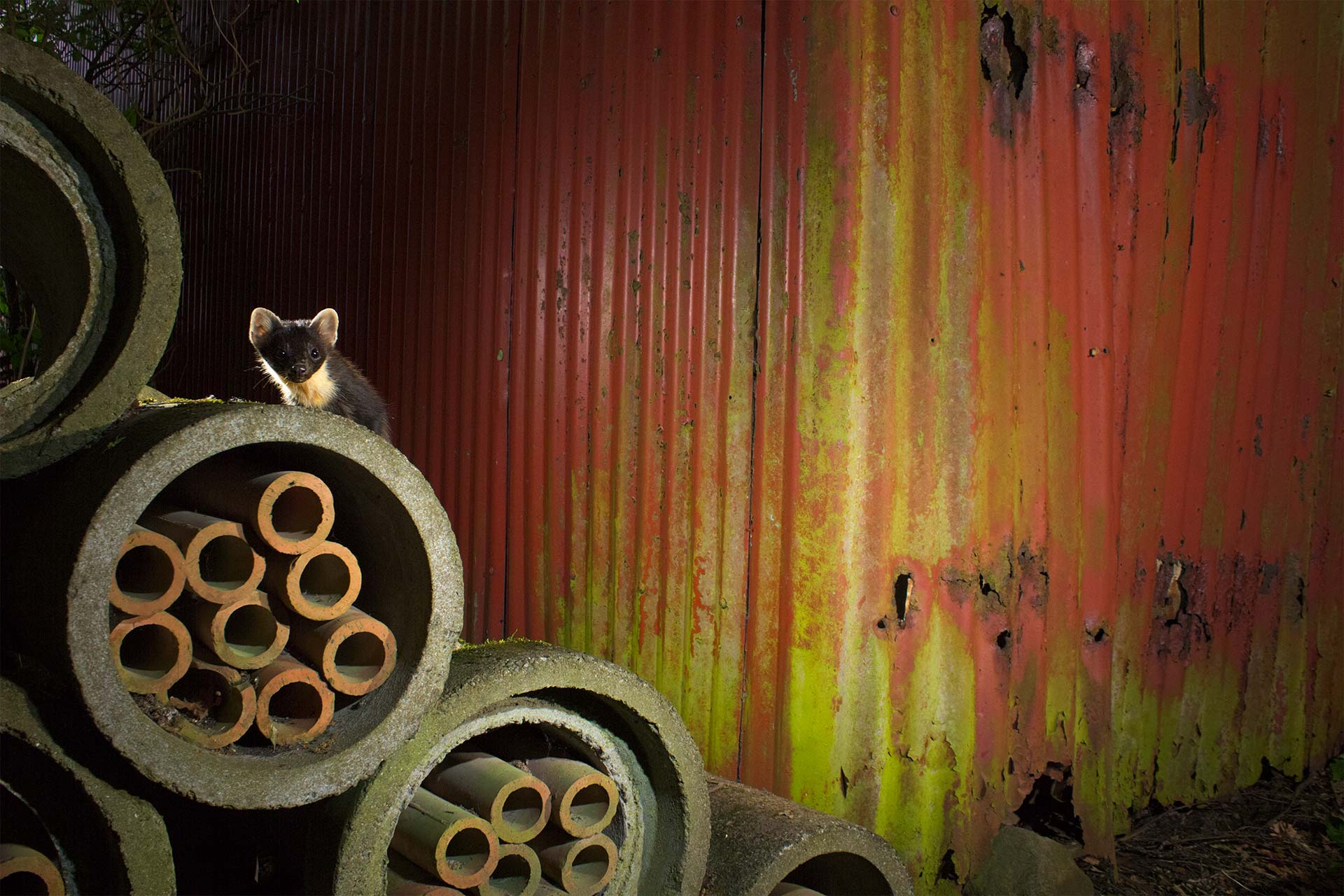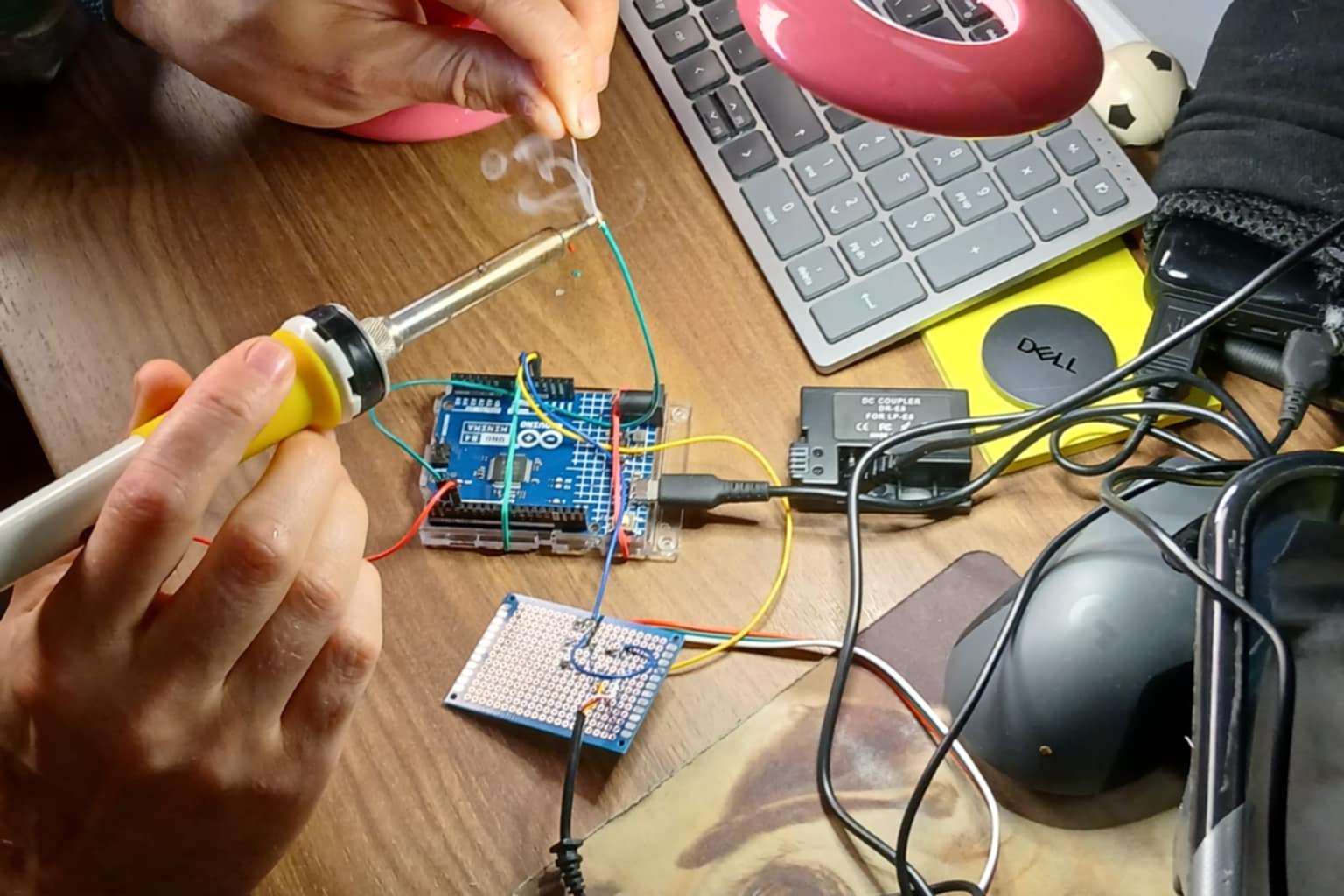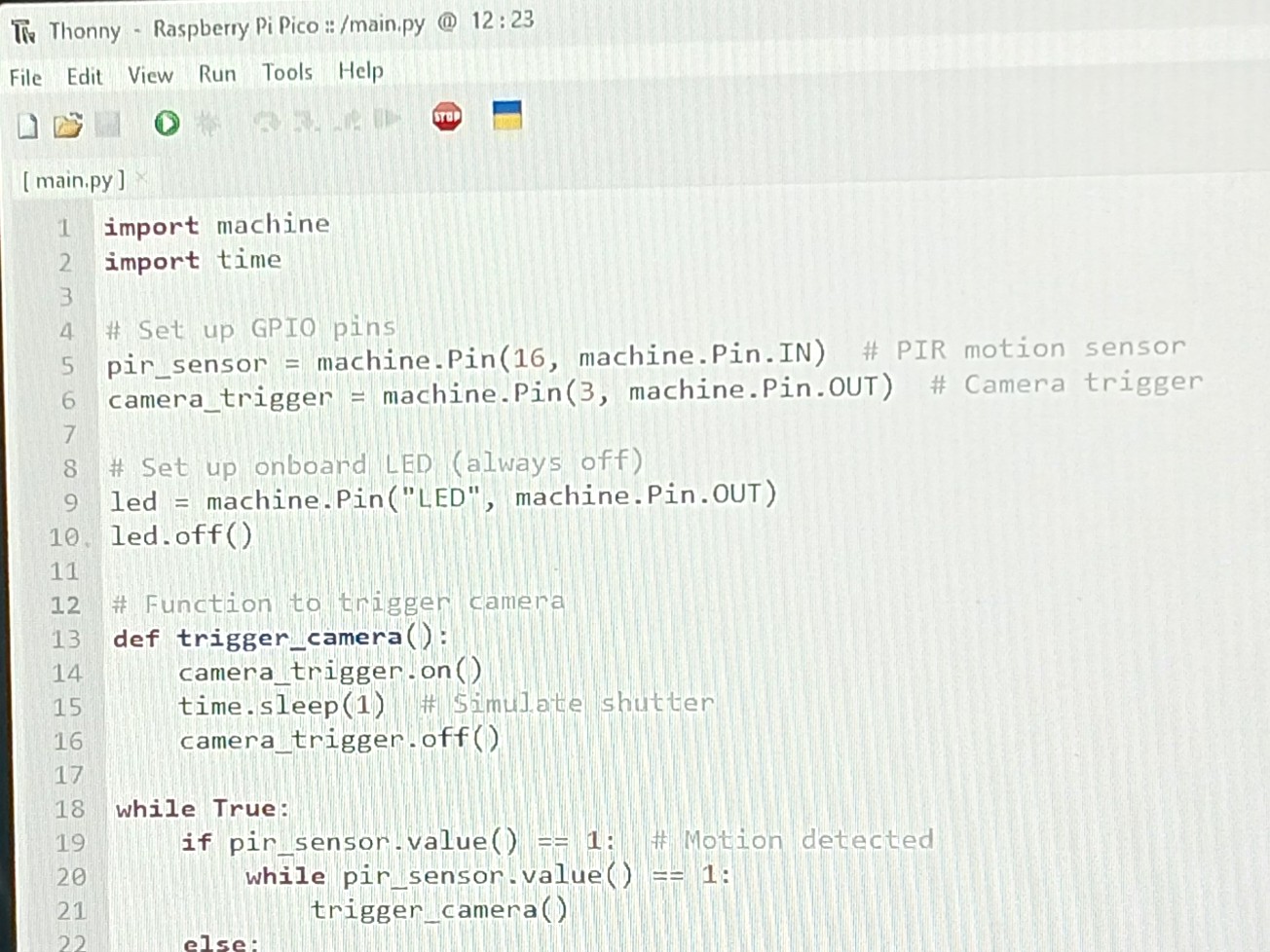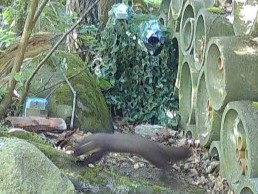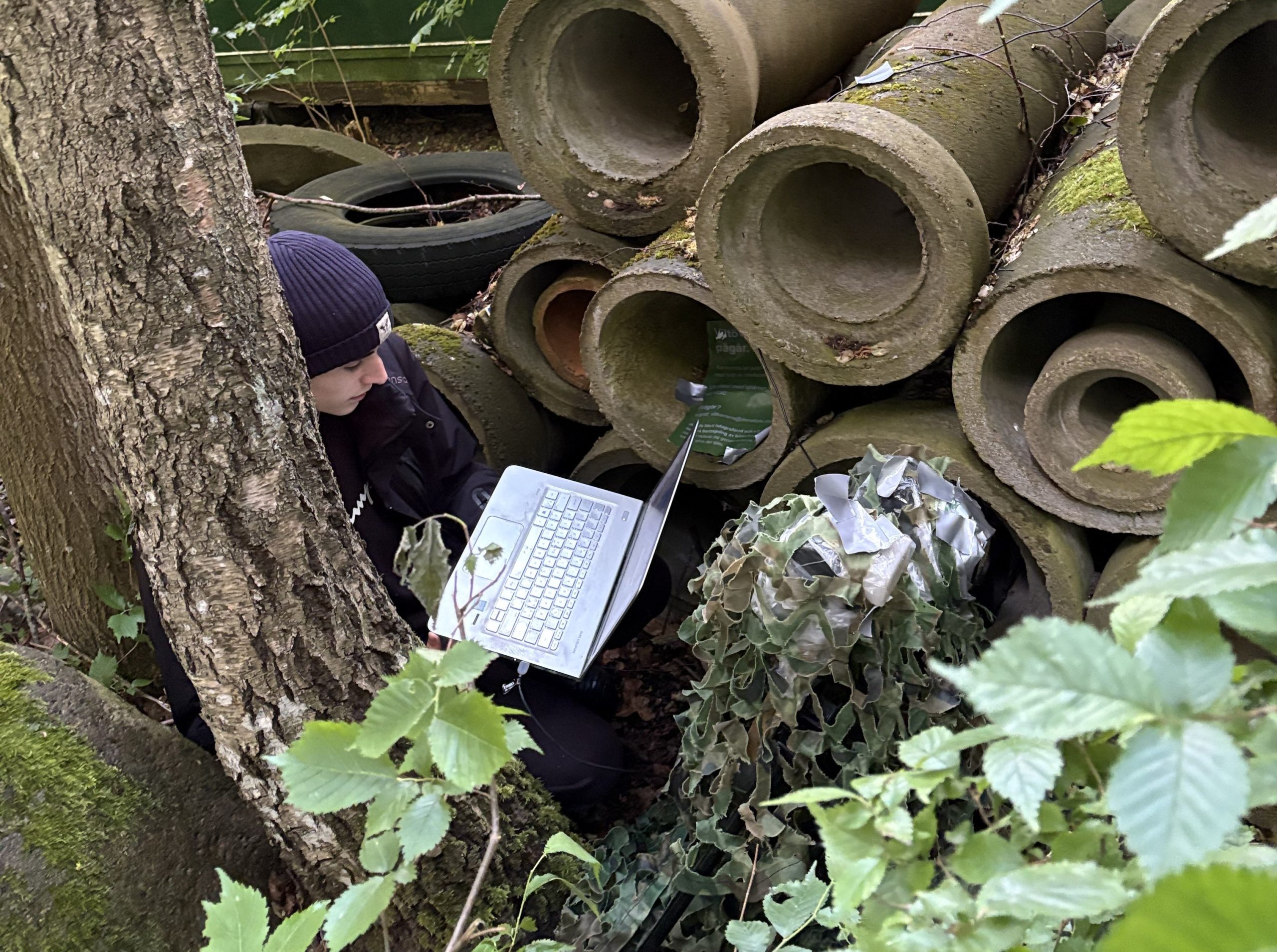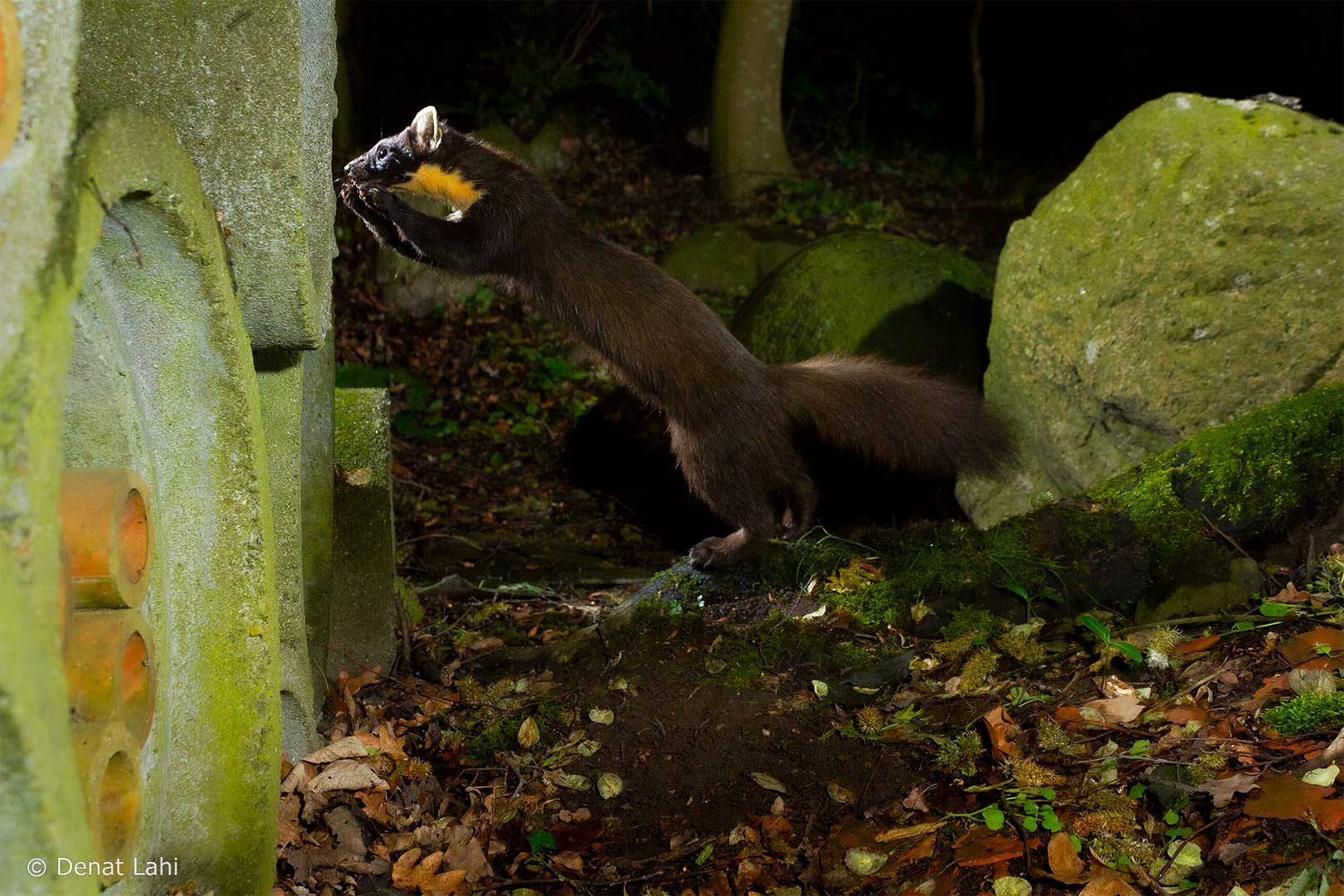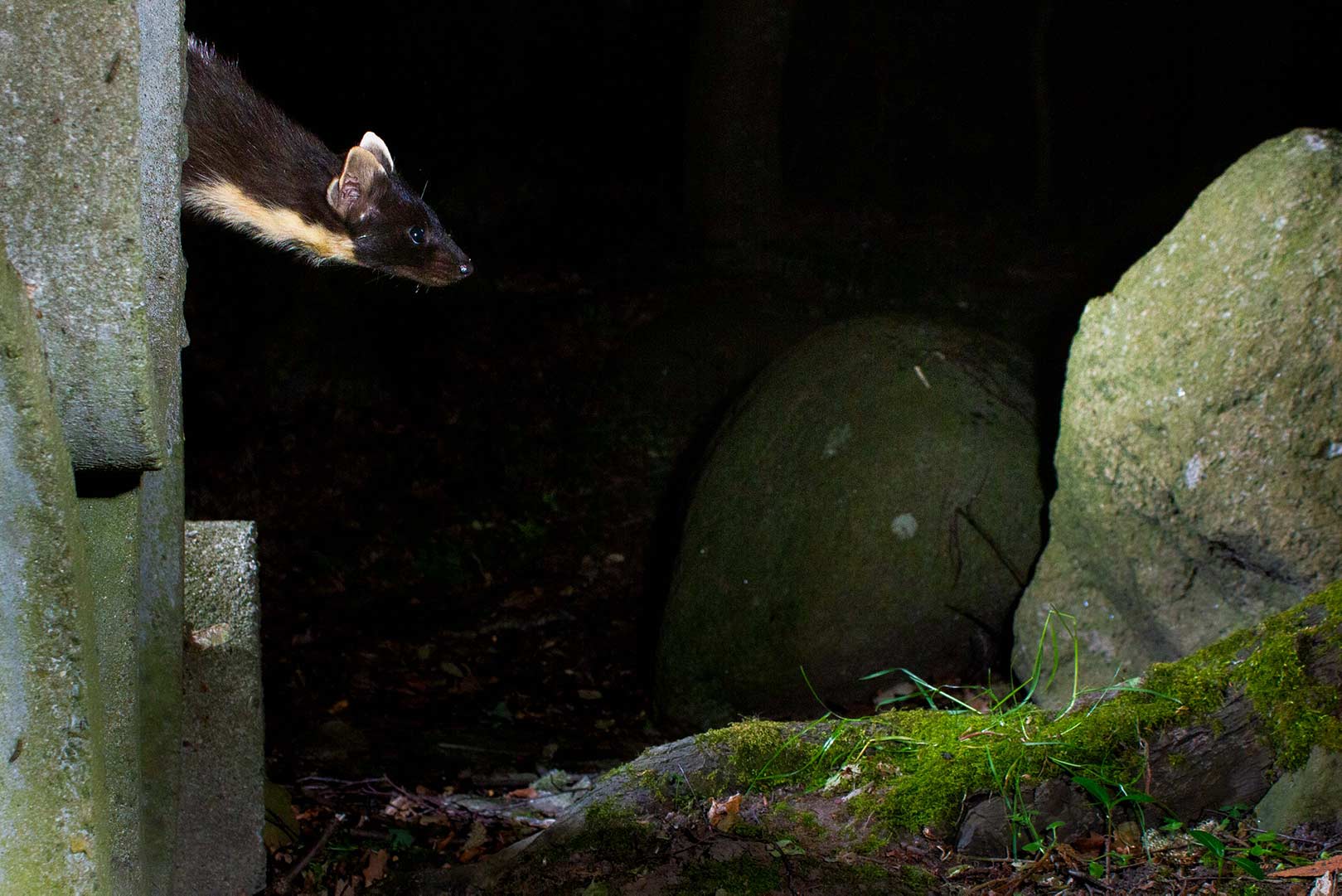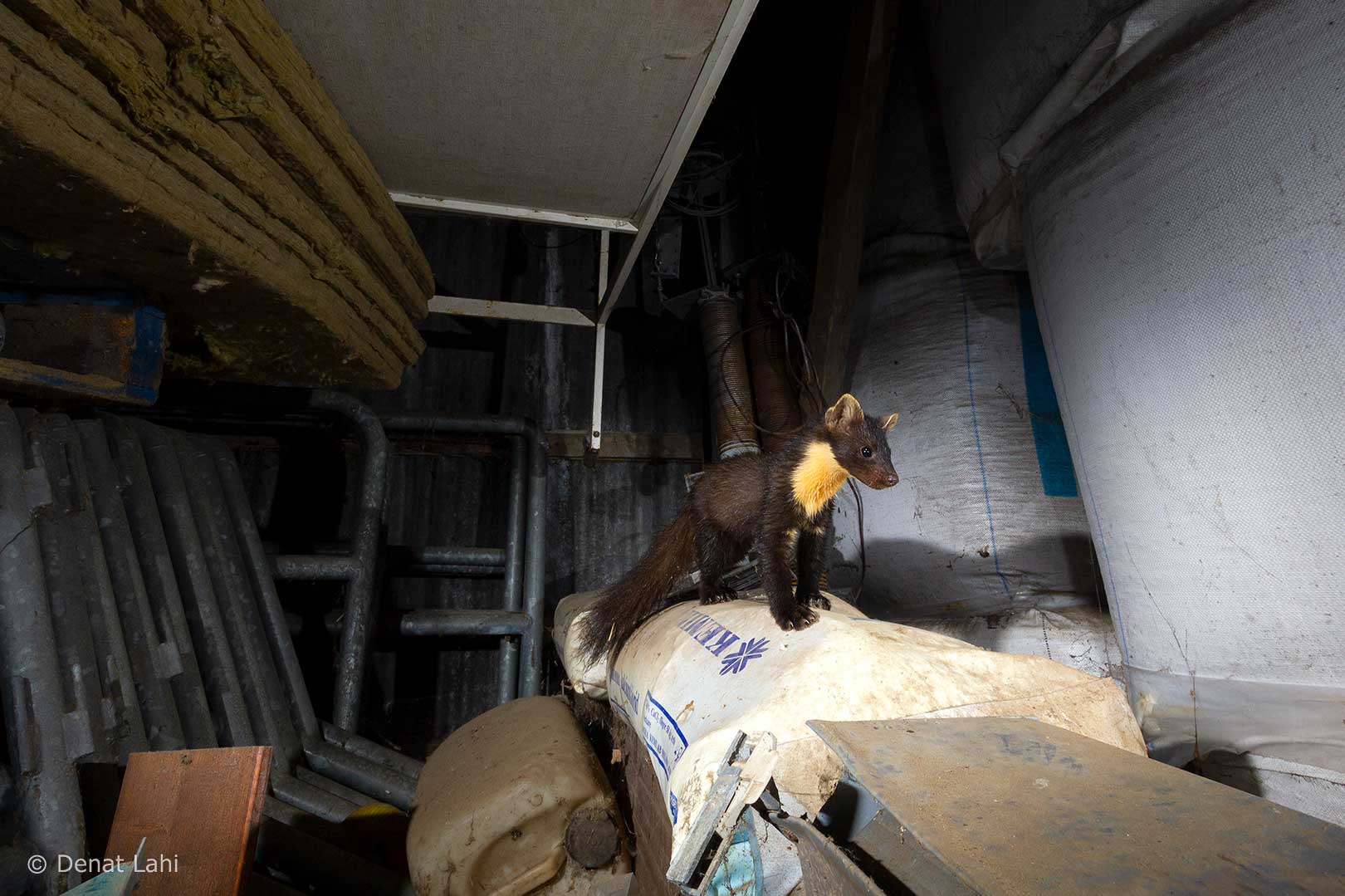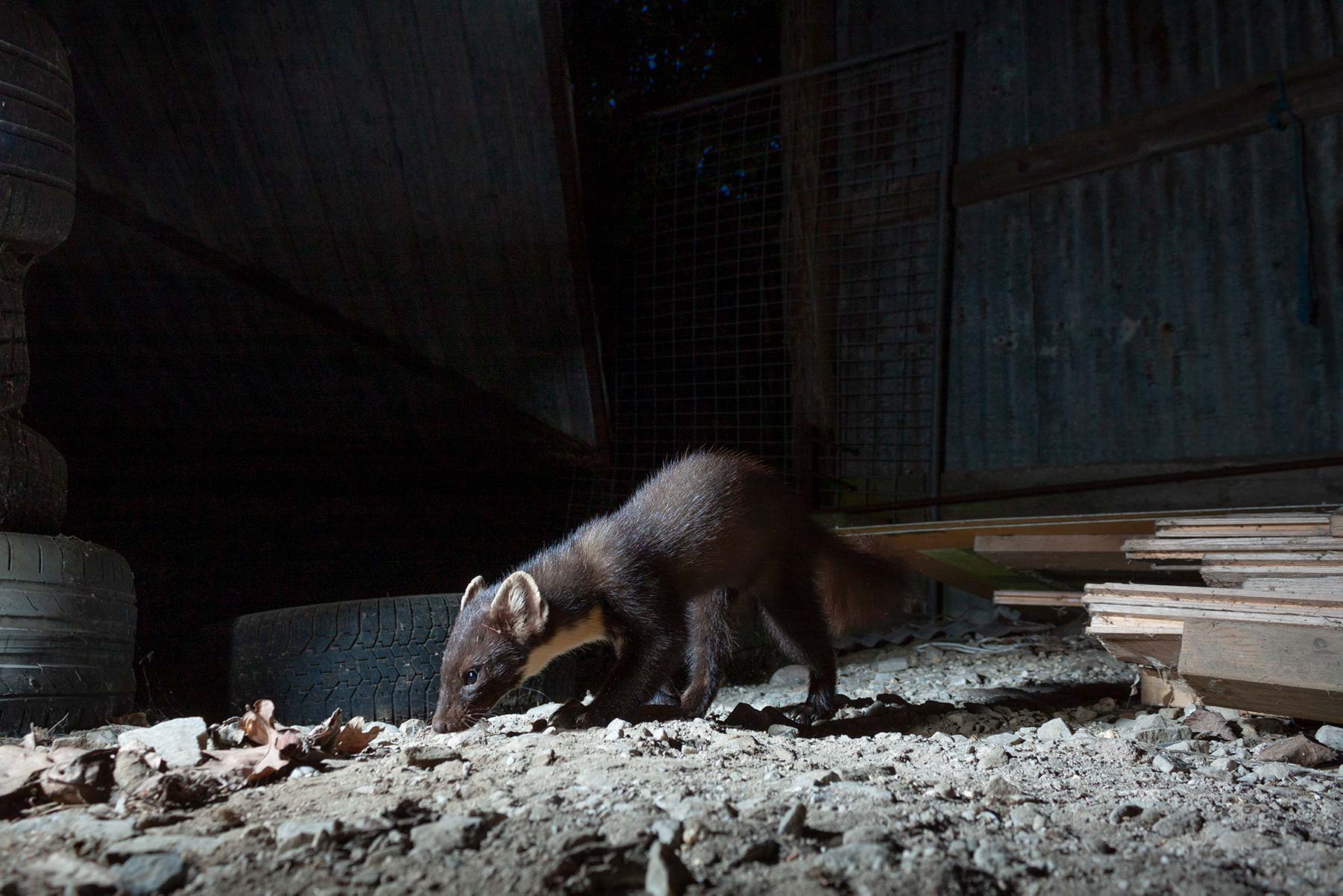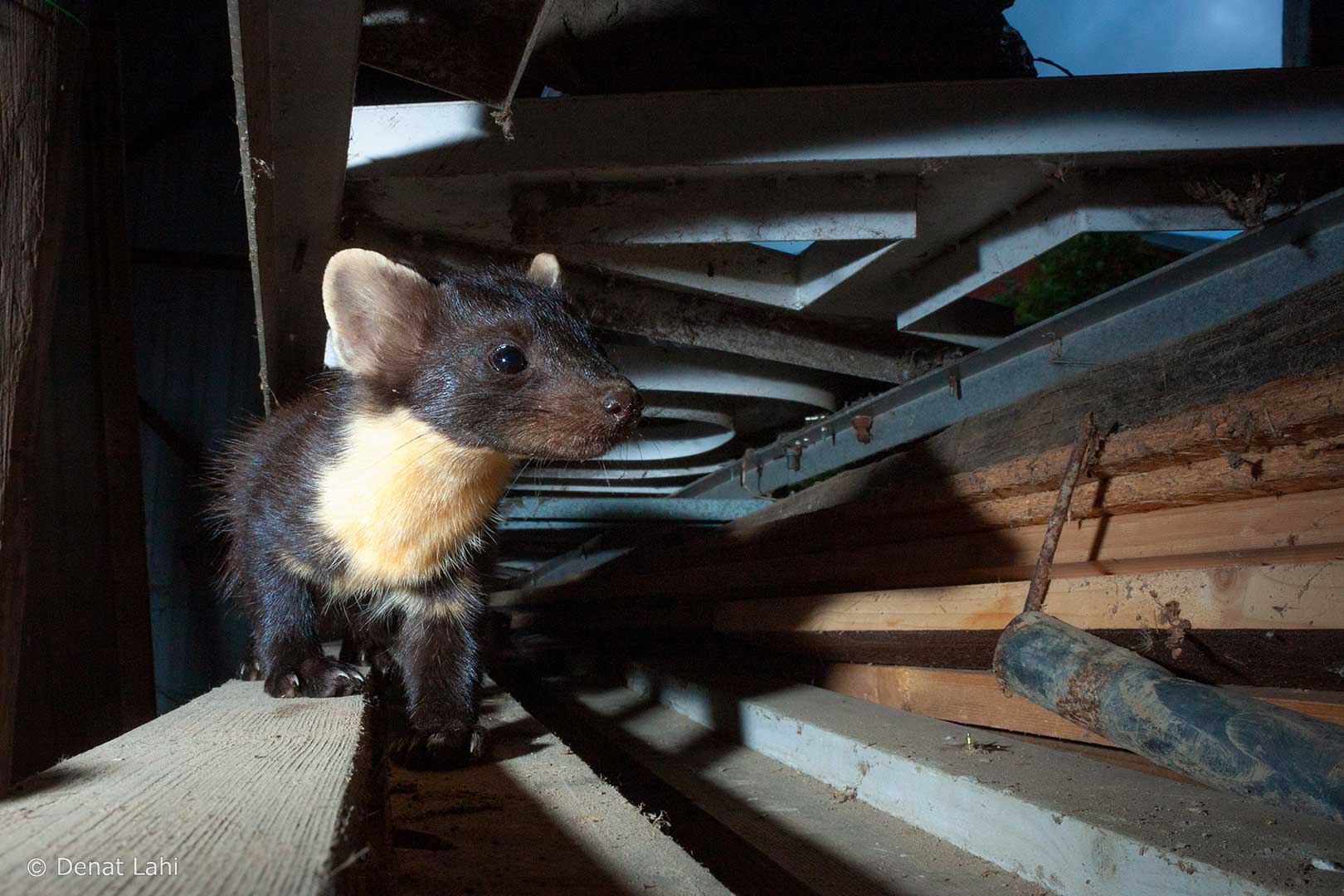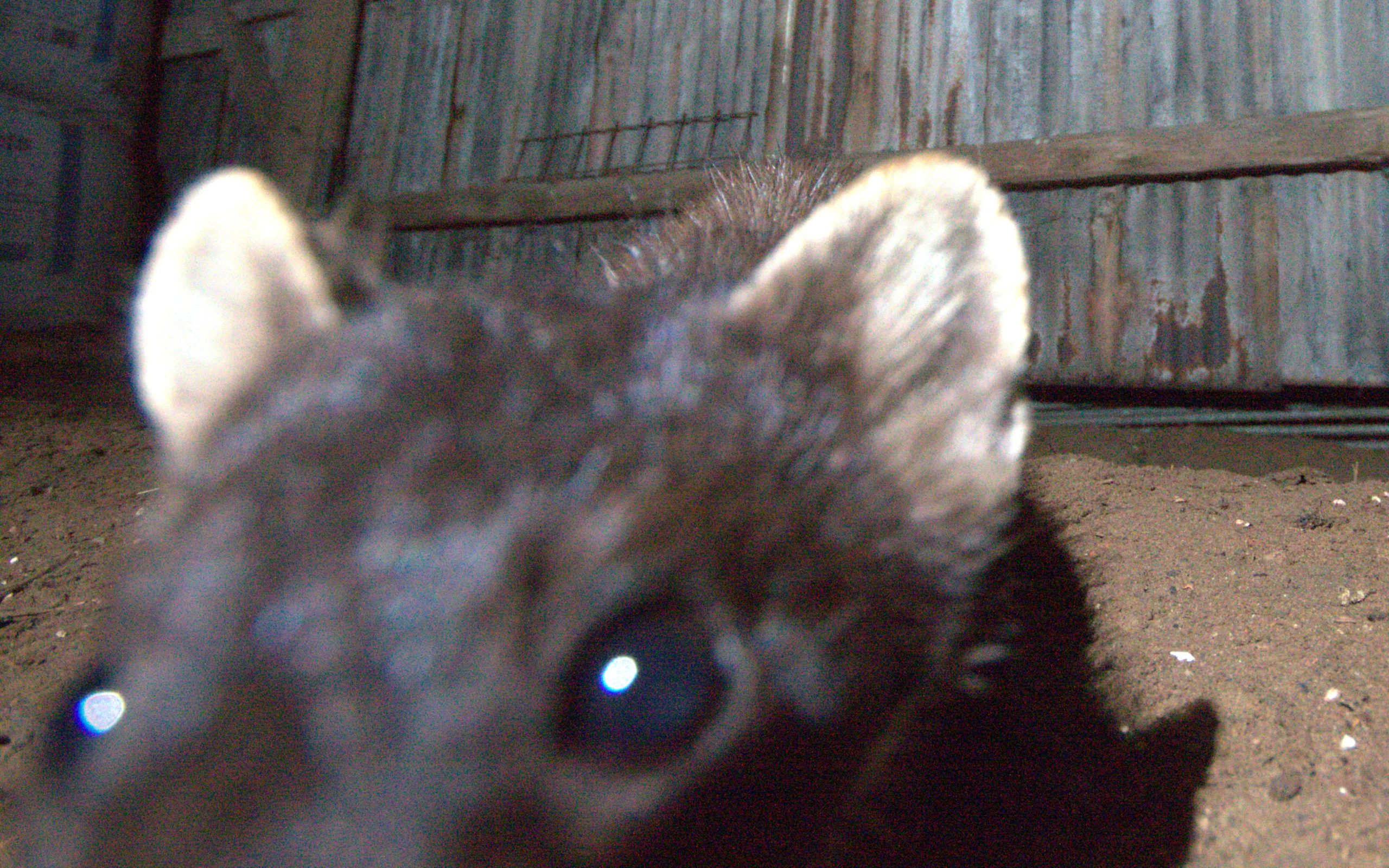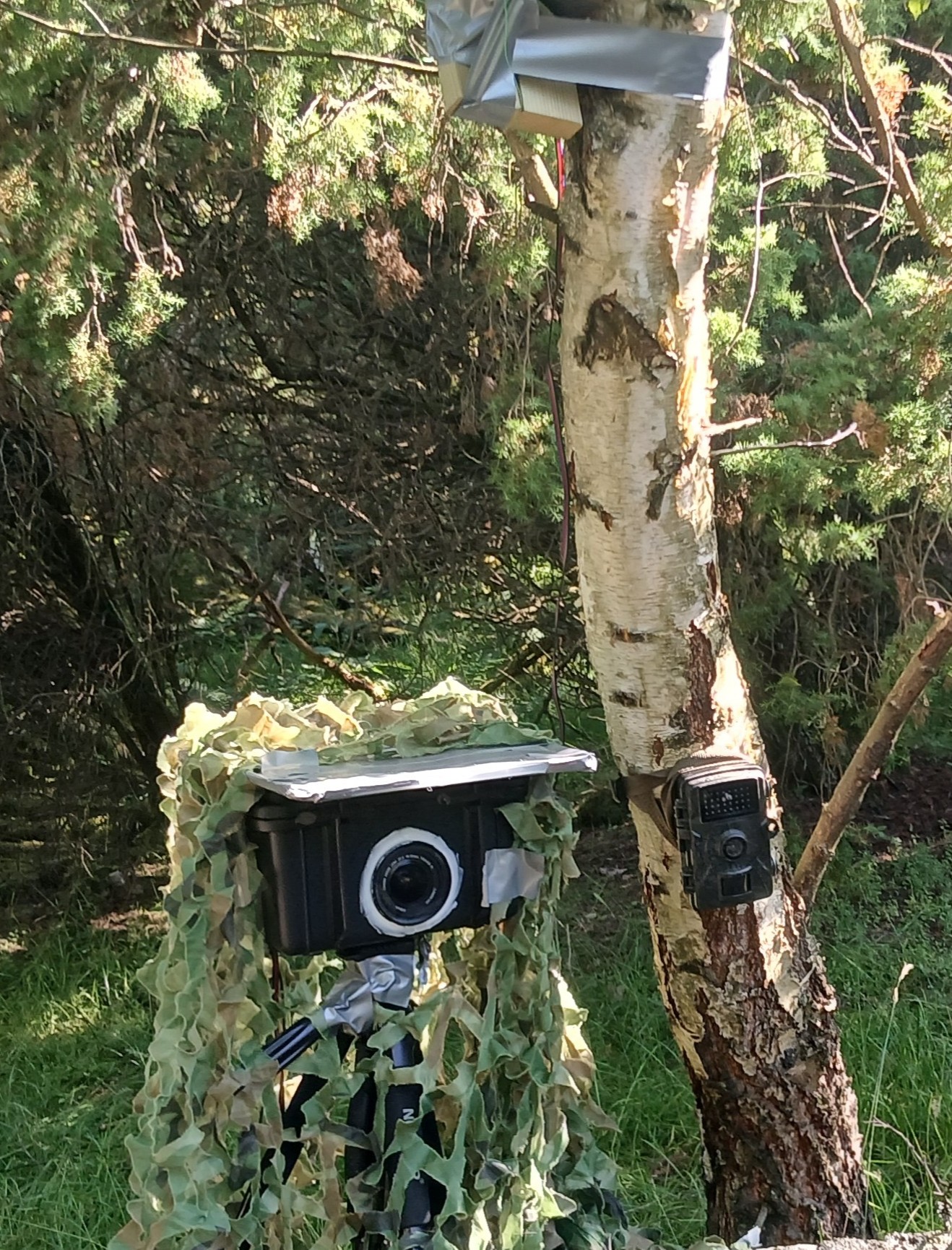Introduction
This project started with a simple question: how could I possibly find and photograph this elusive mammal? Pine martens have rarely been properly documented in Skåne, and that made the challenge even more difficult. With months of planning, fieldwork, and DSLR camera traps, I set out to photograph this elusive and primarily nocturnal animal in a place few would expect. This page takes you behind the scenes of the project—how it started, the gear I used, and the work that went into capturing moments most people never get to see. At just 17 years old, I’m excited to share this project, which marks a significant leap in my wildlife photography.
Author: Denat Lahi
Latest update: 10 August, 2025
Project goals
The main goal of this project is to photograph wild pine martens and research their population and behaviour in Skåne. My objective is not just to take simple portraits, but to photograph them in environmental settings that show more of their behavior and surroundings. I also want to challenge myself by using DSLR camera traps to improve my skills in wildlife photography. Beyond personal growth, I hope this project can help raise awareness about the presence of the pine martens.
A pine marten captured on one of my trail cameras during research on the population and behaviour.
Challanges
One of the biggest challenges in my pine marten project was that I had to create completely new systems for photographing wildlife. Pine martens are both extremely rare and mostly nocturnal, which means that even if I were to sit quietly in the woods for days, I could easily go without ever seeing one. Traditional methods weren’t an option. I had no past experience with camera trapping or using off-camera flashes, so I had to learn everything from scratch—building custom setups that could work automatically at night, using flashes to naturally light up a scene from darkness, and figuring out how to place the cameras in the right locations.
Photographing pine martens with camera traps came with unique challenges. Firstly, the PIR sensors often triggered falsely, filling up my SD cards and draining batteries quickly. At some point, it was taking 4000 photos a day, and I had to seriously optimize my homemade camera triggering system with some smart Python coding and buffer systems.
The pine martens sometimes ran so fast past the cameras that the sensors didn’t detect them at all. This was a huge problem. I would see on my trail camera that they were running past my camera, and I was missing out on amazing and rare image opportunities. One way I solved this problem was by placing the third flash unit so it was slightly visible along the pine marten path, making it stop for a moment to check out the new object in its path, before continuing as normal. But that window of time when the pine marten is stopped allowed me to trigger the camera. This method only worked a couple of times, then the pine marten got used to the flash unit on the path. Another solution was to simply adjust the placement of my PIR sensor and sensitivity, but that introduced problems with false triggers and early triggers when the pine marten was not fully in frame.
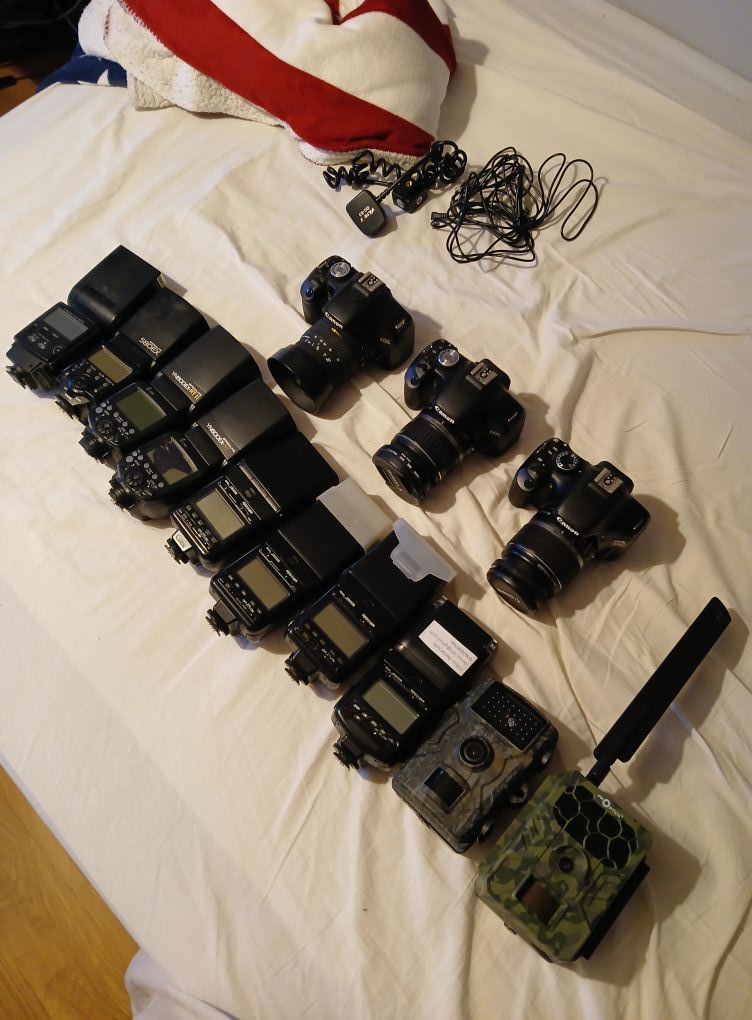
Equipment
For my primary Pine Marten DSLR camera trap, I use a Canon 550D paired with the standard 18–55mm kit lens. It’s housed in a homemade waterproof box that has been holding up well in the field. For this camera, I use a 128GB SD card. Apart from this, I also have two other camera traps using the Canon 500D and kit lenses. Sometimes, I also use a Canon 10-18mm lens for extreme wide-angle shots on my secondary cameras.
When it comes to flashes, my go-to is the Nikon SB-28. It has a reliable standby mode, low power draw, and a quick recycle time that makes it ideal for wildlife photography. I also use a mix of other Nikon flashes, including the SB-24, SB-25, SB-26, SB-600, and SB-80DX. They’re all solid performers and work well in different lighting setups. As for connections, I prefer everything to be wired. Wireless connections are such a hassle, in my opinion.
The triggering system is something I put together myself. It’s a custom build using an inexpensive PIR (passive infrared) motion sensor connected to a programmable microcontroller. This setup lets me precisely decide how the camera responds to movement, giving me much more control over timing and shutter behavior.
To monitor pine martens, I use a combination of seven different trail cameras. Some are advanced models that send images directly to my phone in real time, such as the ProOptics 4G, while others are simpler, more affordable units placed mainly to confirm activity in a specific area.
Gallery and results
The best photos from the pine marten project.
Ongoing work and future plans
This project is still ongoing, and there’s much more I want to achieve. I’m currently working toward a series of more advanced and expressive images of pine martens—photos that go beyond basic documentation and show behavior, mood, and context. Some of my dream photographs to capture moving forward include a pine marten jumping mid-air with a forest background, one climbing a mossy tree during a sunset, one with a background filled with stars, and lastly one in fresh snow. These types of images require precise timing, custom lighting setups, and a lot of patience and planning.
Eventually, I plan to publish a book about pine martens. Whether it becomes a full book dedicated to this species or a chapter in a larger work on mammals, the goal is to create something long-lasting that highlights their presence and behavior in Skåne.
Do you want to contribute to the project?
If you have knowledge about pine martens in Skåne, own land where I could set up a camera, or have tips about sightings, I’d love to hear from you. All information will be kept confidential, and I will not share it with anybody else.
Email: contact@denatlahi.com
Here’s another contact alternative below.
Click on this text to send a message without leaving the website.
Credits and special thanks to:
My Dad – For helping me develop and solder the advanced electrical components involved in triggering the camera, and for driving me to the camera setups for routine checks.
Linus Nyblom – For helping me locate a pine marten.
SVT Nyheter Skåne – For covering the story and bringing attention to the project.
ProOptics and Daniel Hjort – For supplying me with a reliable Pro-Optics PRO 4.4G as part of a promotional partnership.
Björn Östman – For helping me get started on researching pine martens and for verifying scats.
Jocke Mårtensson – For donating two camera lenses.
And a finishing appreciation to everyone who has supported my journey.


